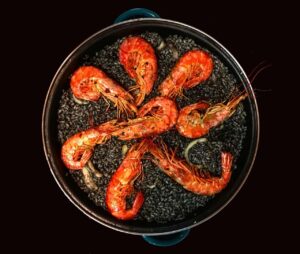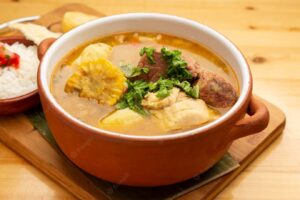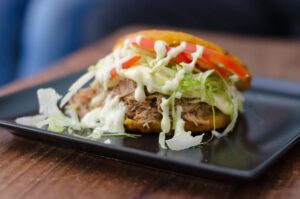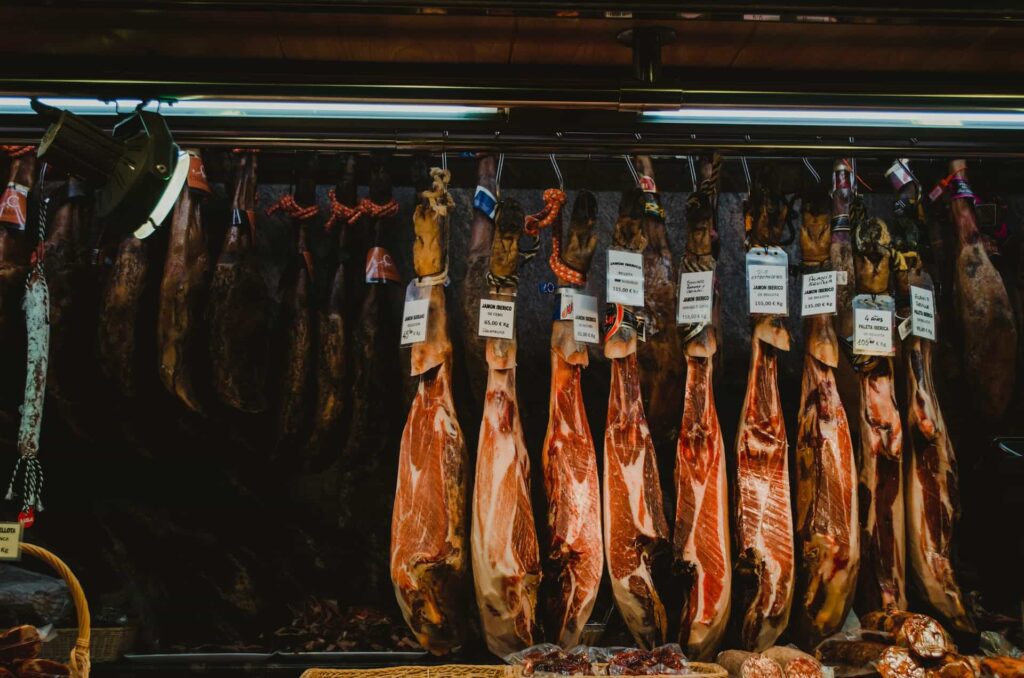
Jamón (Spanish pronunciation: [xaˈmon], pl. jamones) is a kind of dry-cured ham produced in Spain. It is one of the most globally recognized food items of Spanish cuisine. It is also regularly a component of tapas.
Most jamón is commonly called jamón serrano in Spain. Jamón is the Spanish word for ham.
Description
Jamón is typically consumed in slices, either manually carved from a pig’s hind leg held on a jamonero stand using a sharp thin slicing knife, or cut from the deboned meat with a rotatory cold-cut slicer. It’s also regularly consumed in any shape in small portions.

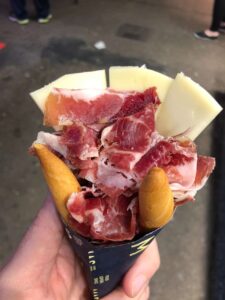 As a product, Jamón is similar to Portuguese presunto and to Italian prosciutto, but the production differs by a longer curing phase (up to 18 months), giving it a dryer texture, deeper color and stronger flavour than the former.
As a product, Jamón is similar to Portuguese presunto and to Italian prosciutto, but the production differs by a longer curing phase (up to 18 months), giving it a dryer texture, deeper color and stronger flavour than the former.
A whole Jamón leg is considerably cheaper by weight than its sliced counterpart because it includes the bone and non-edible fat. Once the external fat layers are removed and the meat is exposed, though, the product must be consumed as soon as possible since a progressive drying and deteriorating process starts. This is not an issue for restaurateurs and retailers, since they go through product much faster than an individual. Home users will typically choose sliced product, be it freshly cut from a deli stand, commercially pre-packaged or vacuum preserved. Jamón is safe to consume for as long as the leg is kept in a dry and cool environment and out of direct sunlight, but it must be kept refrigerated once cut away from the leg.
Jamón may also be smoked in some regions, where it is used mostly for personal consumption. This form of ham is common in the southern areas of Castile and León as well as in parts of Extremadura. Such a jamón has a harder texture and a smoky-salty flavour.
Though widely available in Spain (even if on the expensive side) and accessible in some countries of the European Union, import duties and trade or food safety restrictions applied to foreign meat products in international markets may raise prices substantially while creating scarcity, often making jamón a prohibitively expensive product for other countries to import.

There are two main commercial labels for jamón, based on the pig breed and protected designations:
- Jamón ibérico, is made from the black Iberian pig, and may be consumed internationally as a delicacy
- Jamón serrano (meaning “sierra ham”), includes most other varieties
Wikipedia contributors, “Jamón,” Wikipedia, The Free Encyclopedia, https://en.wikipedia.org/w/index.php?title=Jam%C3%B3n&oldid=1096743320 (accessed September 9, 2022).



